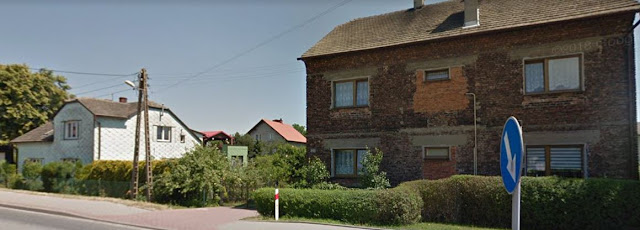Rajsko (German name: Raisko)
Raisko subcamp was established in the village of Rajsko, again after the inhabitants had been expelled, this expulsion occurring in Spring 1941. The buildings were then partly demolished. The camp was another agricultural unit, the first prisoners being male but with female prisoners subsequently arriving in 1942. Initially, the prisoners walked to the site from Auschwitz I and Birkenau, but from June 1943 female prisoners were housed permanently on site. The work at the subcamp involved gardening and plant growing, with vegetables grown in hothouses and flower beds. Some female prisoners worked in an experimental unit where they cultivated an Asian plant called kok saghyz which had roots containing a substance called caoutchouc, used in the production of rubber. In 1943 there were 250 prisoners in the subcamp, but this number had increased to 320 by June 1944.
Most of the prisoners initially were Polish, with others being Jews, Russians, French, Yugoslavian and German. Many of them had degrees in biology, chemistry or agronomy, but there were some civilian scientists from Russia working at the site as well.
Buildings in the camp consisted of five barracks, of which two were occupied by the prisoners. A third was used as a workroom where the kok saghyz and caoutchouc were cooked. Other barracks contained a kitchen, washroom and lavatory. Outside the perimeter fence were the hothouses, laboratory and farm fields. There was also a tool room.
Cleanliness was vital for the preparation of the kok saghyz, and this in turn meant that conditions in the camp were far superior to those in Birkenau. The barracks were heated and blankets and sheets were provided. The prisoners washed in warm water and wore clean clothes, and the food was better. However, they were also closely supervised and any prisoners found possessing prohibited items were flogged.
The subcamp was commanded by the director of the Auschwitz farms, SS-Obersturmbannführer Dr. Joachim Caesar. The gardening kommando was commanded by SS-Rottenführer Hermann Grell and the plant-growing kommando by SS-Obersturmführer Dr. Heinz Schattenberg.
On 18th January 1945, the camp was evacuated and the prisoners forced to join the death march towards Wodzisław Śląski where they boarded a train to Ravensbrück camp.
Source: Auschwitz Museum










Comments
Post a Comment